TL;DR: Evaluative research indicated that users were generally satisfied with study rooms in the UCSF Library, but availability, connectivity, and upkeep discourage some from utilizing this service. Recommendations and areas for opportunity were based on direct feedback and observation and were used to make improvements and guide the direction of the study room service.
Project Context
Reservable study rooms are one of the most popular services in the library but there wasn't a clear understanding of the audience, needs, or pain points. To gain a better understanding of the service, I used a quantitative and qualitative approach to gather data over three months.
Specifically, the findings focus on:
• Group study room use
• Level of satisfaction with group study rooms
• Direct comments about the group study rooms
Design and Implementation
The goal of this research is to get feedback directly from users to augment the usage data and give us a more accurate picture of needs and expectations in 2019-2020 regarding study rooms.
Discovery
Looking at the reservation system, I pulled stats from a two-year period.
I also surveyed rooms to document existing issues.
Survey Tool
A short ten question Qualtrics survey was created. Physical signage with a link and QR code to the survey was placed on tabletops in all study rooms and at the library service desk. A URL to the survey was also placed on the study room reservation page.
Snapshot of survey signage
Observation
Sometimes what users do reveals things beyond what they say, so naturalistic observational research was performed once a week to better understand user behavior. From those observations, a few trends emerged:
• Most users brought laptops
• Groups rarely used monitors in rooms that had them
• Users often surveyed the area for available rooms
• Whiteboards were often not erased after use
• Trash was often left in rooms after use
• Users often shifted furniture around the space and in and out of rooms
• Lights were often left on after use
Who Responded
A total of 216 people completed the survey. Respondents were made up of students, clinical residents, clinical fellows, postdocs, staff, faculty, and non-current students. Most (93.52% or 202 users) were students.
Users (33% or 72 users) were from the School of Medicine followed by the School of Pharmacy (28% or 61 users).
Because rooms are reservable via LibCal and MyAccess to select UCSF groups, I did not account for users who were not part of the listed schools/departments. In future research, I would add ‘Other (please specify)’ as a survey option.
Room Use
Most respondents (82% or 178 users) were using the room with 1-4 people total.
Respondents (49% or 105 users) used the room mostly to study for an exam or quiz. Some respondents selected ‘Other’ because two or more of the options applied to them. In future research, we will adjust survey settings to allow for multiple answers or ‘All of the above’.
When asked how they found out about group study rooms in the library, the majority of respondents (66% or 143 users) answered ‘Word of mouth’. Several respondents selected ‘Other’ indicating that they heard about library group study rooms at orientation. In future research, we will include ‘Orientation’ as an option.
Opportunities
Whether it’s through orientation or a fellow classmate, word of mouth advertising is highly influential as people are more likely to use a service recommended by their peers. As the data suggests, there are a few areas where we might focus promotional efforts.
Newsletters – Bring more awareness to the library study room service by including information in relevant areas of our monthly email newsletters.
Signage – Placing signage in the path of our users at key decision-making points gives them confidence that they are heading in the right direction. More centrally located signage indicating study room locations within the library along with information about reserving a room online would improve wayfinding and serve as an opportunity to suggest and encourage traffic to other locations in the library.
Room Satisfaction
Respondents were asked to rate on a 1 to 5 scale how much they agree with the following statements:
• Furniture and tech meet my needs
• Rooms are easy to locate
• I can reserve enough time to get work done
• It’s easy to reserve rooms online
• I can always reserve a room when I need one
Respondents mostly agreed with each statement.
The most disagreement came from being able to reserve a room when needed.
Opportunities
Additional study rooms – During peak usage hours, room availability is limited. While most users agreed with the statements above, the most disagreement (19% or 42 users) came from not being able to reserve a room, which demonstrates a need for additional group study rooms in the library. One user wrote, “Is it possible to get more somehow?” Another said, “I wouldn’t recommend the study rooms to anyone because I have difficulty with then [sic] always being reserved or occupied during the school months.”
Upgraded connectivity and easy instructions – While many respondents agreed that technology met their needs, in-person observation indicated that few groups utilized monitors in the rooms that had them. Respondents noted that updated connectivity dongles and clear instructions on how to connect to monitors would be helpful. One user suggested, “Have a full set of connection dongles for each TV in the study rooms. Something akin to the setup classrooms have.” Another wrote, “For the most part, the rooms meet our needs, although it is unclear how to connect to screens when they are available.”
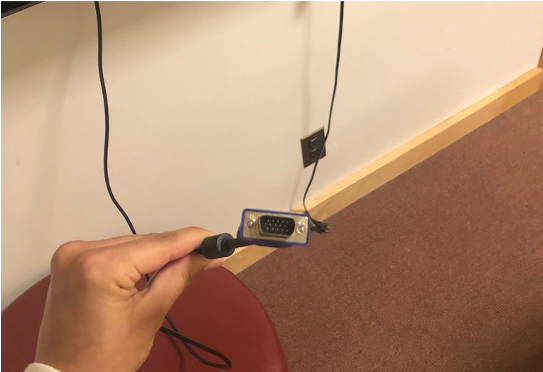
Outdated VGC cables stop users from using TVs to mirror screens
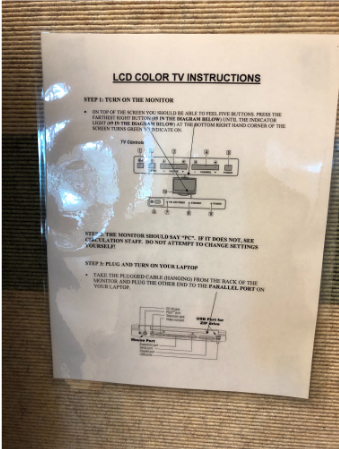
Instructions that focus on diagrams rather than steps to connect
Cleaner rooms – Many respondents commented on the need for cleaner rooms and better air quality. One user wrote, “It would be nice if everyone cleaned and picked [sic] after themselves, in addition to keeping the furniture clean. A lot of the chairs, if not all of them, have stains.” Another wrote, “A lot of the chairs and furniture are quite dirty. This is the main reason that deters me from using the library space most of the time. Other than that, I think it is a good place to get work done.”
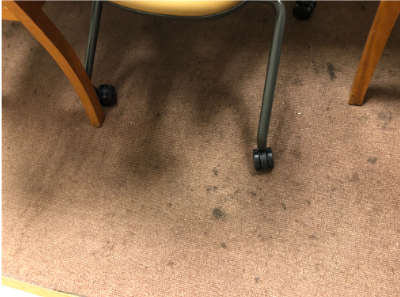
Carpet needed cleaning
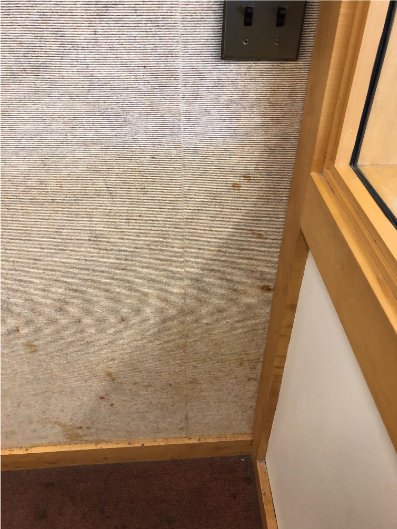
Stained room walls
More outlets – In-person observation indicated that laptops are used most prevalent and many respondents indicated the need for more available outlets within rooms to charge their devices.
Updated furniture – Several respondents asked for updated furniture. One person wrote, “New furniture and cleaner spaces would be much appreciated!”
More modular furniture – In-person observation revealed that groups would often shift furniture around and in and out of rooms to meet their space needs. More modular furniture would provide versatility and flexibility in rooms to make the most of the space, accommodate more users, and allow them to be more mobile.
Bulky furniture often moved in and out of rooms to accommodate groups
Visible, informative signage – In-person observation revealed that several users scanned study areas hoping to find an empty room. More visible signage indicating the ability to reserve online and reminding users to pick-up after themselves would be helpful.
Whiteboards and markers – While users were not directly asked about markers and whiteboards, many commented on the need for new supplies. The idea of checking-out eraser and marker kits via the front-desk is worth exploring, especially if it will ensure that supplies are replenished periodically.
Rooms with whiteboards rarely had clean erasers and new markers
Net Promoter Score
To identify loyal users and measure user experience, we used the Net Promoter Score® (NPS) measurement by asking users how likely they are to recommend library study rooms on a scale of 0-10.
Our overall NPS score is 41. We’ll use this number as a baseline for phase two of this research to measure success.
Insights and Outcomes
The goal for this study was to get feedback from users to increase understanding of needs and expectations regarding group study rooms. Users are mostly satisfied with group study rooms, but availability is limited.
For pain points like tech connectivity, I designed easy-to-follow instructions signage to add to each room for a consistent experience.
Instructions for connecting to TVs
For pain points that touched on room upkeep and promotion, I designed signage for all study room doors. I also added a feedback survey link to the signage, so users can tell us how we're doing and flag any rooms if necessary. They survey is designed to require little effort from users. Adding a feedback loop will allow the library to keep up with user needs for this service.
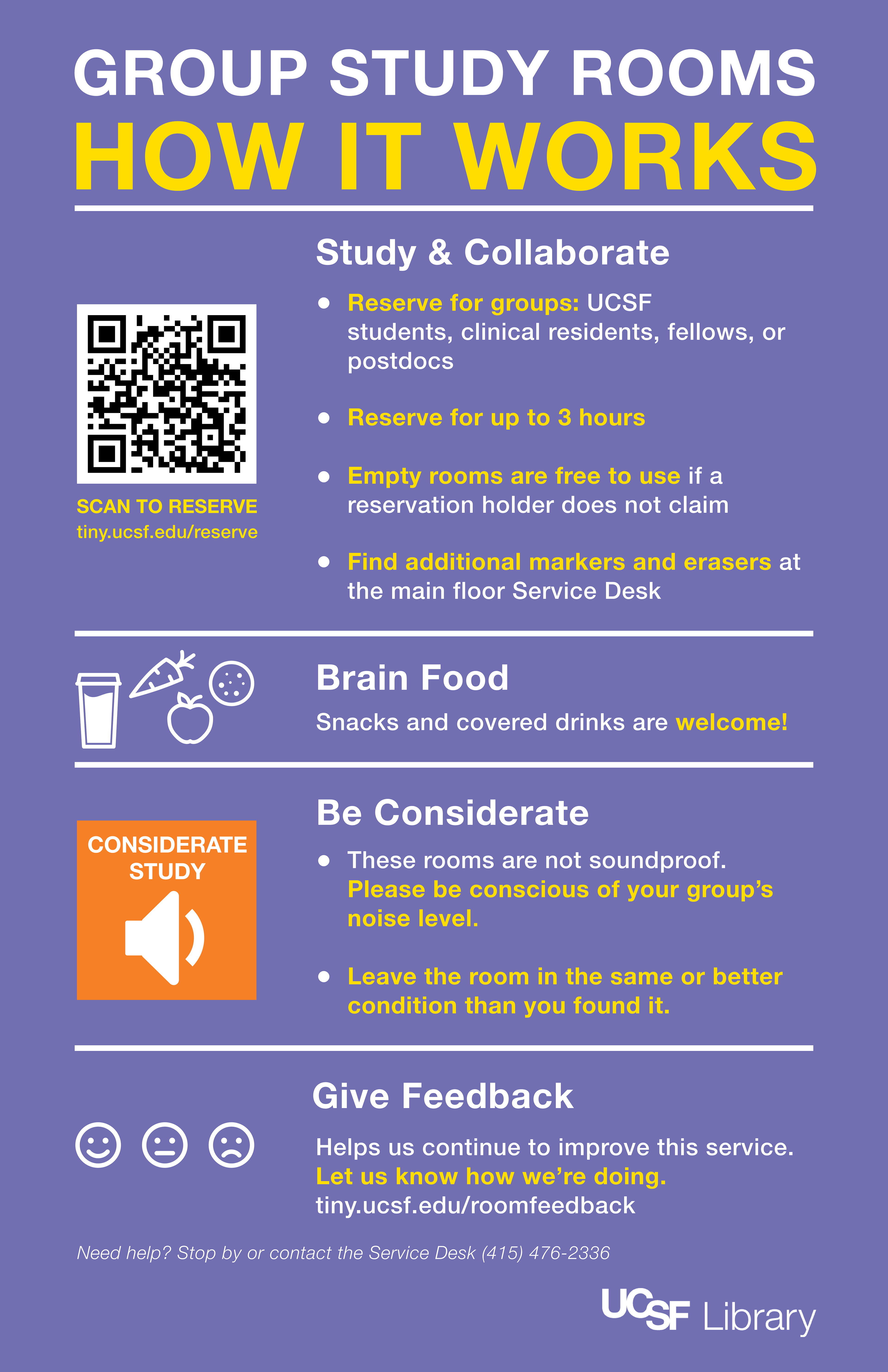
How group study rooms work signage that includes link to feedback survey
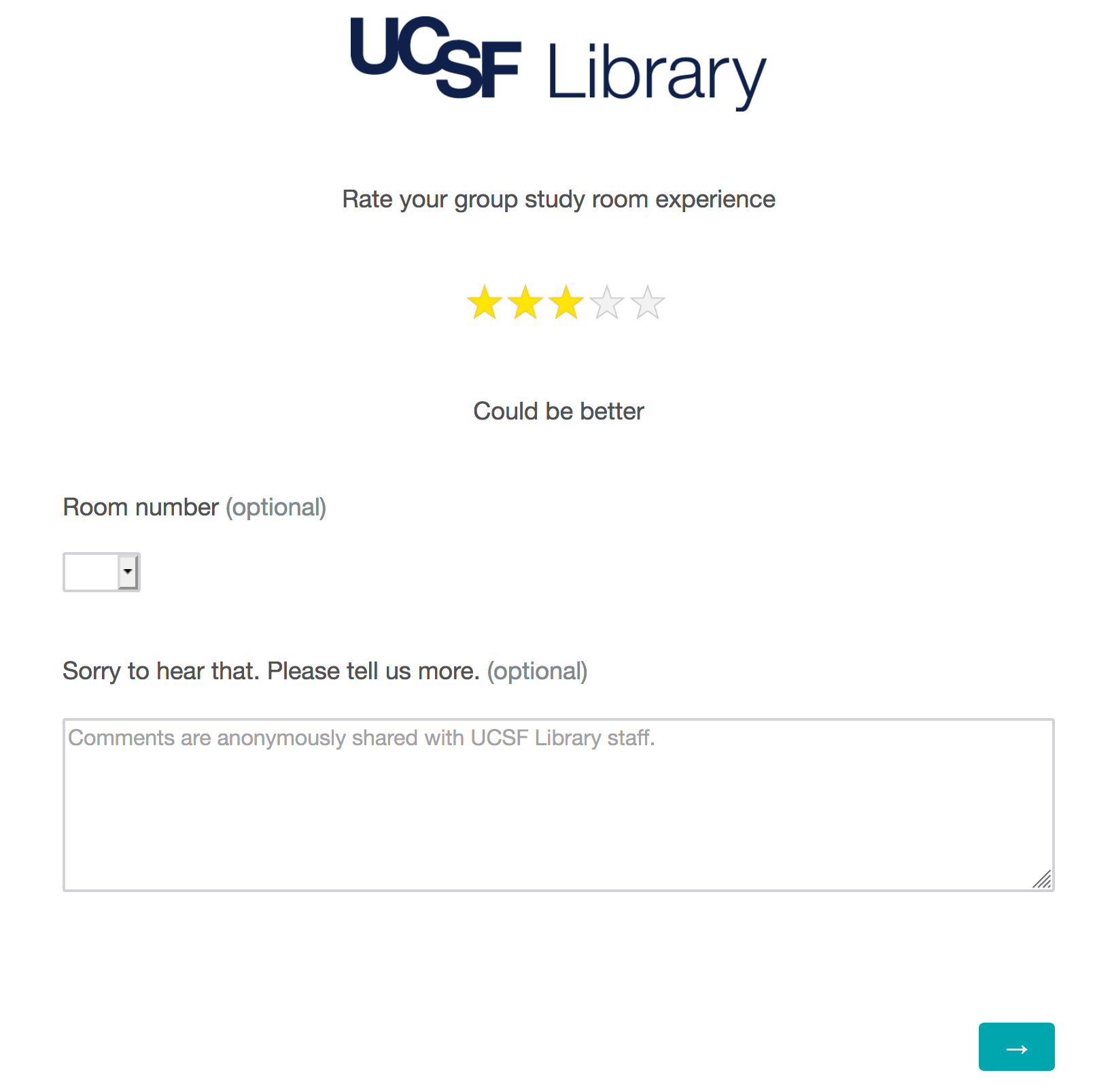
Snapshot of survye designed for a quick response from room users
More modular furniture was added to study rooms allowing users to easily move furniture around. And by coordinating with front desk staff, I was able to coordinate new markers and erasers to be replenished weekly.

Upgraded study room with HDMI cable, TV monitor, and floor to ceiling whiteboards
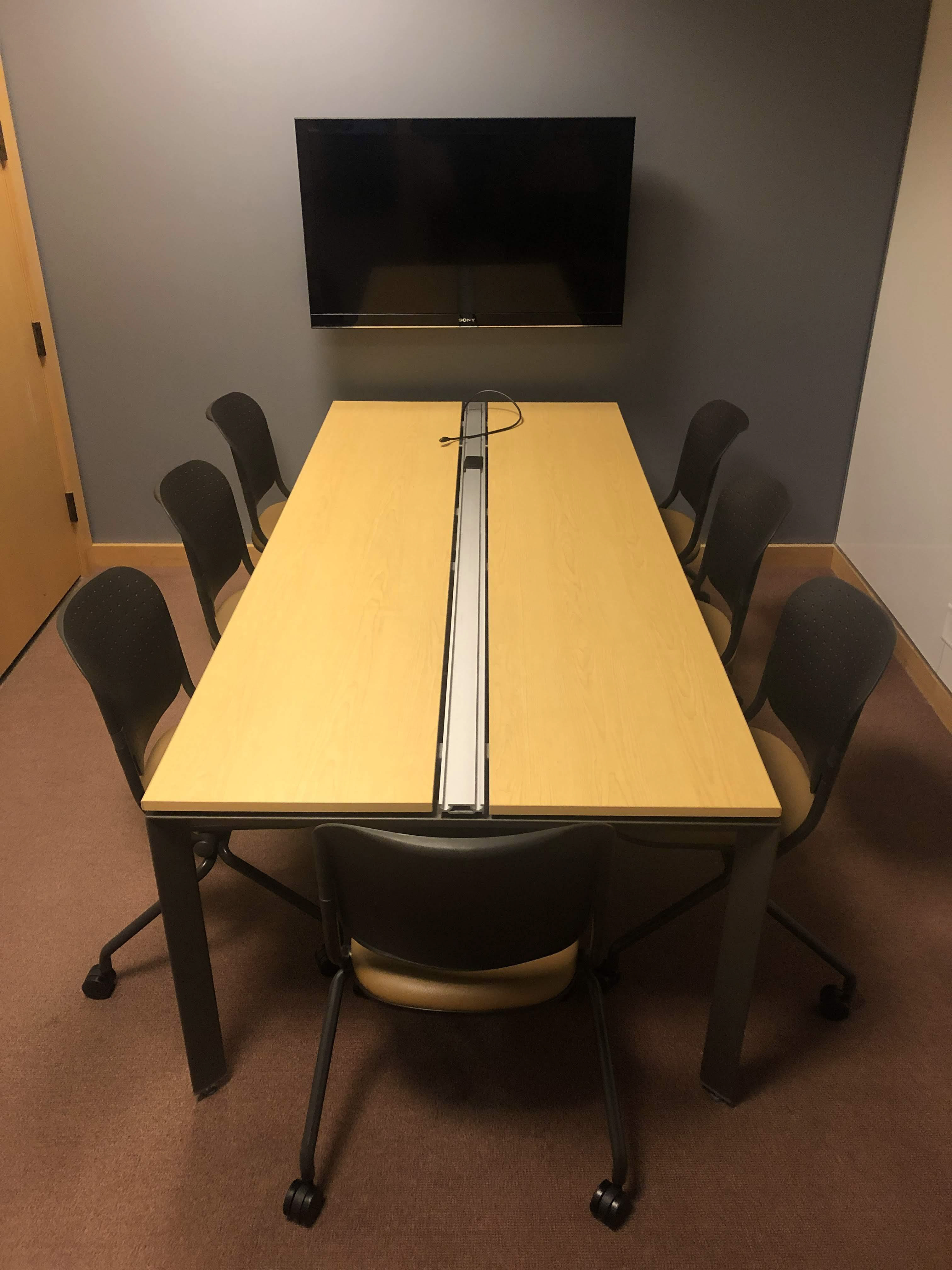
Upgraded study room with HDMI and TV monitor
Moving forward, these findings, insights, and outcomes will be used to guide the direction of the study room service as further pain points and areas of opportunity are discovered.